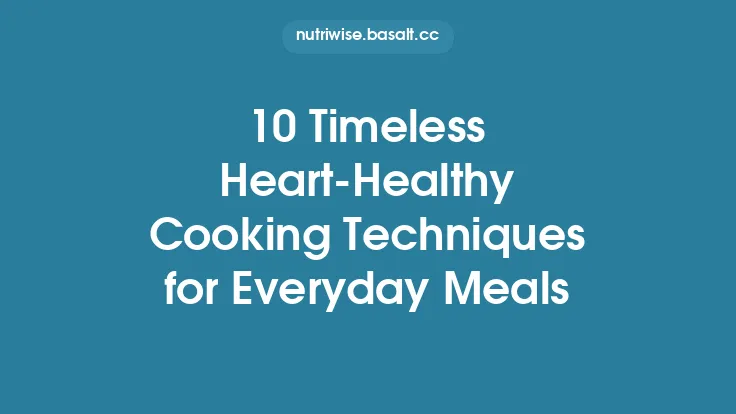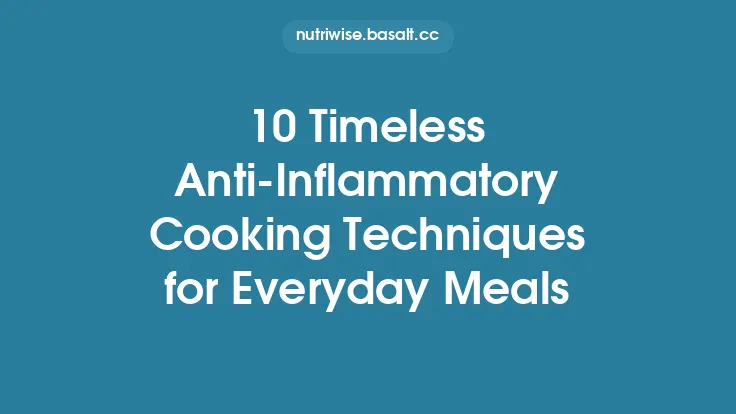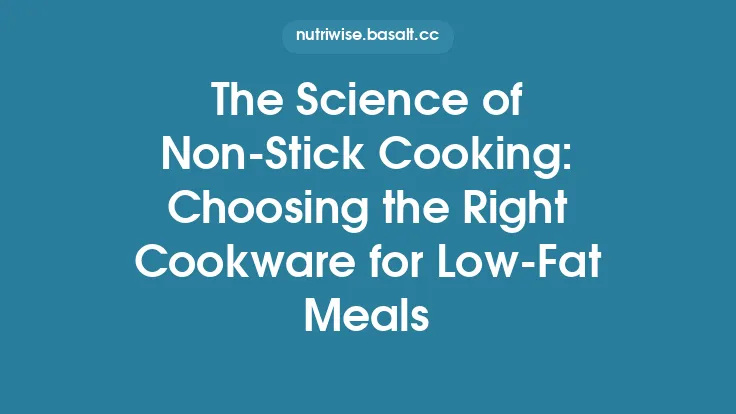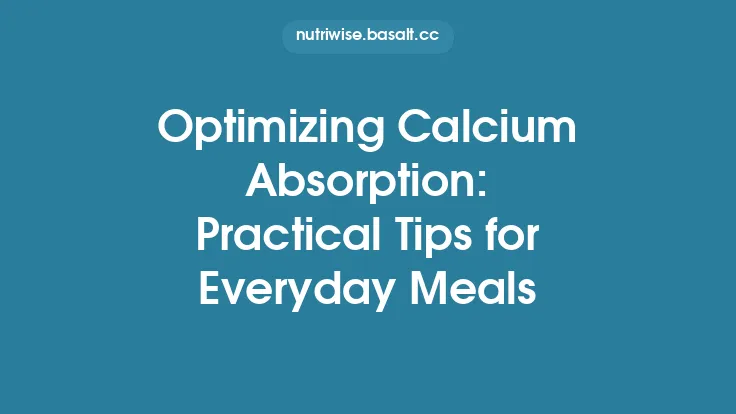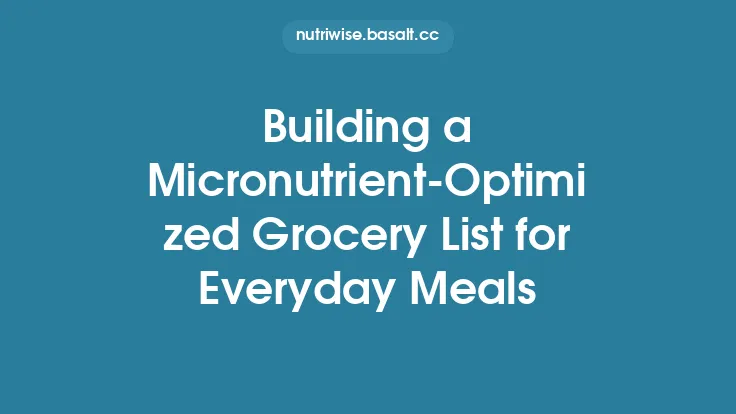Cooking is an everyday act that can become a sanctuary for the mind as well as a source of nourishment for the body. When we pair the rhythmic motions of chopping, stirring, and plating with a gentle, guided meditation, the kitchen transforms into a space where stress melts away and presence deepens. Below is a comprehensive guide to creating and using guided cooking meditations for the meals you make most often, from a quick weekday breakfast to a leisurely weekend dinner. The focus is on evergreen practices that you can adapt and return to again and again, regardless of changing trends or dietary fashions.
Understanding Guided Cooking Meditations
Guided cooking meditation is a structured mental practice that uses spoken cues, music, or ambient sounds to direct attention while you prepare food. Unlike a generic mindfulness reminder, a guided session is synchronized with the stages of a recipe, offering a narrative that:
- Anchors attention – Each cue corresponds to a specific cooking action (e.g., “Feel the weight of the knife as you slice the carrot”).
- Regulates arousal – The pacing of the guide can gently raise or lower physiological arousal, helping you stay calm during high‑heat moments and stay alert when timing is critical.
- Creates a mental storyline – By weaving a short story or visual metaphor through the cooking process, the guide gives the activity a sense of purpose beyond mere function.
Research in psychophysiology shows that pairing focused attention with rhythmic motor activity can lower cortisol, improve heart‑rate variability, and increase the perception of control—all of which translate into a calmer cooking experience.
Designing a Meditation Flow for the Kitchen
A well‑crafted meditation flow follows the natural arc of a recipe: preparation, transformation, and completion. Below is a template you can customize for any dish.
| Phase | Typical Kitchen Actions | Sample Guided Cue | Purpose |
|---|---|---|---|
| 1. Grounding | Gather ingredients, wash hands, set up tools | “Place your palms on the countertop. Feel the cool surface, notice the texture of the wood or stone. Take a slow inhale, and as you exhale, let any lingering tension drift away.” | Establishes a calm baseline before activity begins. |
| 2. Intentional Prep | Measuring, chopping, mixing | “As you measure a cup of flour, imagine each grain as a tiny seed of possibility. When you slice the onion, notice the crisp snap of the blade and the subtle aroma that rises.” | Directs attention to tactile and olfactory cues without turning it into a separate sensory‑awareness lesson. |
| 3. Transformation | Heating, simmering, baking | “Listen to the gentle hiss of the pan. With each bubble that pops, let a thought of gratitude for the nourishment you’re creating surface, then let it dissolve like steam.” | Keeps the mind anchored during periods where visual focus is limited. |
| 4. Timing & Flow | Stirring, flipping, checking doneness | “When you stir, trace a slow circle in your mind. Align the rhythm of your spoon with the rhythm of your breath, inhaling for two counts, exhaling for two.” | Provides a subtle breathing cue integrated into the cooking action. |
| 5. Completion & Reflection | Plating, tasting, cleaning | “Arrange the food as if you are painting a canvas. Before you taste, pause, inhale the aroma, and notice the colors. When you take the first bite, savor the texture and flavor fully, acknowledging the effort that brought it here.” | Encourages mindful eating and a sense of closure. |
Tips for crafting your own script
- Keep it concise – Aim for 30‑90 seconds per cue; longer prompts can interrupt the flow of cooking.
- Use present‑tense language – It reinforces immediacy (“you are” rather than “you will be”).
- Match the tempo – Faster cues for quick chopping, slower, elongated phrases for simmering.
- Include optional pauses – A brief silence after a cue allows the mind to settle before the next action.
Integrating Meditation with Common Cooking Tasks
Breakfast Routines
Morning meals are often rushed, making them perfect candidates for micro‑meditations. A 5‑minute guided session can be embedded into the coffee‑making process:
- Coffee/Tea Brewing – While the water heats, the guide invites you to notice the rising steam and the subtle change in temperature on the kettle’s handle.
- Egg Preparation – As you crack eggs, the cue highlights the sound of the shell breaking, encouraging a moment of auditory focus.
- Toast Timing – The timer’s “ding” becomes a signal to pause, take a breath, and appreciate the crispness before spreading butter.
Lunch Prep for Work
When assembling a salad or a grain bowl, the meditation can be structured around layering:
- Base Layer (greens, grains) – “Feel the weight of the bowl in your hands; imagine it as a foundation for the day ahead.”
- Middle Layer (protein, veggies) – “Place each ingredient deliberately, noticing its color and texture.”
- Finishing Touch (dressing, herbs) – “Drizzle the dressing in a slow, steady motion, visualizing it as a gentle rain nourishing the garden of flavors.”
Dinner Cooking
Evening meals often involve multiple cooking methods. A guided meditation can weave through the sequence:
- Sautéing – “Listen to the sizzle; each pop is a reminder that transformation is occurring.”
- Simmering – “Watch the surface of the sauce; the gentle bubbles are like breaths of the pot.”
- Plating – “Arrange each component with intention, as if you are arranging a small sculpture.”
Audio and Sensory Tools to Support the Practice
While the core of guided cooking meditation is the spoken script, supplemental audio can deepen immersion:
- Ambient Soundscapes – Soft kitchen sounds (light clatter, distant water running) or nature recordings (rain, forest) can mask distracting background noise.
- Binaural Beats – Low‑frequency beats (e.g., 4–7 Hz theta range) have been shown to promote relaxed focus without overwhelming the cooking task.
- Instrumental Music – Minimalist piano or acoustic guitar tracks with a tempo of 60–80 bpm align well with the natural rhythm of most cooking actions.
When selecting audio, ensure the volume is low enough to hear the cooking cues (e.g., the timer, the sizzle) and that the sound does not become a competing stimulus.
Tailoring Meditations to Different Meal Types
| Meal Type | Key Considerations | Sample Adaptation |
|---|---|---|
| Quick Snacks | Very short time window; focus on micro‑moments | A 30‑second “mindful bite” cue before each bite of fruit or nuts. |
| One‑Pot Meals | Extended simmering periods; opportunity for deeper immersion | A 5‑minute guided visualization that runs while the pot simmers, encouraging the mind to wander gently and return to the present. |
| Baking | Precise timing and temperature control; often involves waiting periods | Use the pre‑heat and cooling phases for longer meditative passages, allowing the mind to settle while the oven works. |
| Fermentation & Pickling | Long‑term processes; focus shifts to intention setting | Record a short intention‑setting meditation before sealing jars, reinforcing the purpose of preservation and care. |
Measuring Benefits and Tracking Progress
To determine whether guided cooking meditations are enhancing your culinary experience, consider a simple self‑monitoring approach:
- Baseline Survey – Rate your typical stress level during cooking on a 1‑10 scale for a week.
- Post‑Session Rating – After each guided session, note the immediate stress rating and any physical sensations (e.g., tension release, breath depth).
- Weekly Summary – Average the scores; look for trends such as a gradual decline in stress or an increase in perceived enjoyment.
- Qualitative Reflections – Keep a brief journal entry about any insights, creative ideas, or moments of calm that arose.
Over a month, you’ll likely observe measurable reductions in perceived stress and an increase in culinary confidence, both of which are indicators of the practice’s efficacy.
Common Challenges and Solutions
| Challenge | Why It Happens | Practical Solution |
|---|---|---|
| Forgetting to start the guide | Habitual cooking is often automatic. | Set a timer or place a sticky note on the stove as a cue to press “play.” |
| Audio interference with kitchen sounds | Loud mixers or fryers can drown out the guide. | Use a small, directional speaker placed near the cooking area, or opt for a guide with a slightly higher volume and clear diction. |
| Feeling self‑conscious while speaking aloud | Some people dislike hearing their own voice. | Record the guide in a neutral tone and play it back; avoid speaking yourself unless you prefer a personal touch. |
| Difficulty maintaining focus | Multitasking can fragment attention. | Limit the number of simultaneous tasks; for example, focus on chopping while the guide runs, then pause the guide during a high‑heat step that demands full visual monitoring. |
| Time constraints | Perceived lack of extra minutes. | Integrate the meditation into existing wait times (e.g., while water boils, while dough rises). The practice adds no extra time; it simply occupies idle moments mindfully. |
Resources and Further Exploration
- Open‑Source Script Libraries – Platforms such as GitHub host community‑contributed meditation scripts that you can adapt.
- Meditation Apps with Customizable Audio – Apps like Insight Timer or Calm allow you to upload your own recordings and set timers that align with cooking stages.
- Scientific Articles – Look for studies on “mindful movement” and “cognitive load reduction during routine tasks” for deeper theoretical grounding.
- Professional Guidance – If you wish to develop a more sophisticated program (e.g., for a culinary school or wellness retreat), consider collaborating with a certified mindfulness instructor who understands the nuances of kitchen environments.
By weaving guided meditation into the fabric of everyday cooking, you create a practice that nourishes both body and mind. The approach is flexible, evidence‑based, and designed to fit seamlessly into any kitchen routine—whether you’re whipping up a simple omelet or simmering a complex stew. Over time, the habit not only reduces stress but also cultivates a deeper appreciation for the act of preparing food, turning each meal into a quiet, intentional celebration of life.
